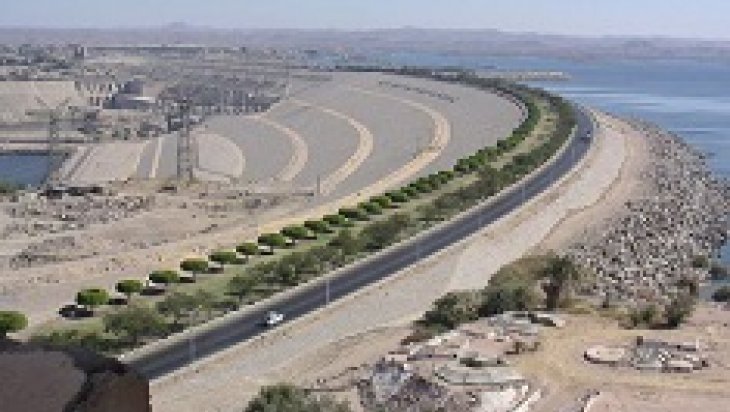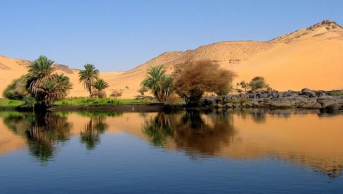Deal over the Ethiopian Grand Renaissance Dam: A New Chapter in Cooperation in the Nile Basin?

According to Egypt”s official news agency, Egypt, Sudan and Ethiopia have reached a preliminary agreement on sharing the Nile River's waters and operating Ethiopia's Grand Renaissance Dam. Foreign Minister of Egypt, Sameh Shoukry declared that they have agreed on the principles governing the cooperation between three countries on the use of the eastern Nile Basin as well as the Grand Renaissance Dam in Ethiopia. Ethiopian Foreign minister Tedros Adhanom has concluded that the agreement would open a "new chapter" in relations between the three states. Despite this recent positive step; it would still be hasty to conclude that this is the end of the Nile dispute, particularly between Egypt and Ethiopia.
The Grand Renaissance Dam will have a 74 billion cubic meter reservoir. It is being built on the largest tributary of the Nile, the Blue Nile. According to estimates, it will be one of the biggest hydroelectric power plant in Africa, if not the biggest. It will have a power of 6000 MW. The cost of the dam is immense in African standards, some 4.2 billion dollars. Ethiopia started to divert the Blue Nile in May 2013. If everything goes well, the dam will be completed in 2017. So far, Egypt was continuously critical of the project claiming that it will harm downstream countries, namely Egypt and Sudan. Ethiopia, on the other hand, advocated that the dam will not cause harm to downstream riparians.
According to Egyptian discourse, it has historic rights on the Nile waters. Egyptian civilization did exist thanks to utilization of Nile waters. Egyptians argue that these rights are protected by two international treaties: 1929 and 1959 treaties. It could be better to look these two agreements in a more detailed manner in order to analyze the full picture which culminated into today’s context of relations among riparians.
The 1929 Treaty reads that “Egypt and Sudan would utilize 48 and 4 billion cubic meters of the Nile flow annually, respectively; The flow of the Nile during dry seasons would be reserved for Egyptian use; Egypt would have a right to monitor the Nile flow in the upstream countries; Egypt would have the right to undertake Nile river related development projects regardless of the consent of upstream countries; and Egypt would have the right to veto any construction projects that could affect her interests adversely.” It is apparent that this agreement gives Egypt nearly full control over Nile waters.
The 1959 Agreement, in a nutshell, stipulates that the whole average annual flow of the Nile to be shared among the Sudan and Egypt at 18.5 and 55.5 billion cubic meters, respectively. According to the agreement Egypt would be able to construct the Aswan High Dam that can store 80 billion cubic meters of water. The agreement also granted Sudan to build the Rosaries Dam on the Blue Nile. Finally, a Permanent Joint Technical Commission would be established to sustain the technical dialogue and cooperation between two countries. The 1959 Agreement is quite significant in the sense that it openly ignored the rights of other riparians of the Nile. For instance, while contributing more than three thirds of the total volume of the Nile, Ethiopian rights were not taken into account. Beginning from 1990s, Ethiopia started to criticize the 1959 Agreement more vociferously.
Despite secured Egyptian water rights on the Nile, which until then faced Ethiopian resistance solely, another track of cooperation gained momentum in 1990s which culminated into the Nile Basin Initiative (NBI). Officially commenced in 1999, the NBI is defined as “a regional intergovernmental partnership that seeks to develop the River Nile in a cooperative manner, share substantial socio-economic benefits and promote regional peace and security.” Members of the NBI includes Burundi, Democratic Republic of Congo, Egypt, Ethiopia, Kenya, Rwanda, South Sudan, The Sudan, Tanzania, and Uganda. Eritrea is an observer. The NBI appears to be first basin-wide cooperative platform and joint attempt for resolution of conflicts on the Nile, contrary to previous hegemonic discourse of Egypt which faced only fragmented resistance from riparian states. Thus, the NBI signifies a more balanced setting in the Nile water dispute. However, the NBI should be perceived as rather “a transitional institution” until a permanent institution will be created following the talks among riparians. Also, its mandate is not very robust.
Nevertheless, because of rising Ethiopian demands, continuation of its immense Renaissance Dam, and developing structure of the NBI, Egypt now seems to be more inclined to cooperation with Ethiopia, as wells as with other riparians. This last agreement on the principles for sharing Nile waters could be understood within this context. Additional factor could be the changed attitude of Egyptian government, which, contrary to Morsi’s harsh criticisms of Ethiopian Grand Renaissance Dam, tries to adopt a more cooperative tone. Finally, it could also be the case that Ethiopia might have given some concessions to secure Egyptian acquiescence, if not support, for its dam, and subsequent irrigation projects. We do not know the details of the agreement, so far. It should be, though, borne in mind that the fate of the recent agreement is still unclear since it needs to be approved by the heads of governments.











